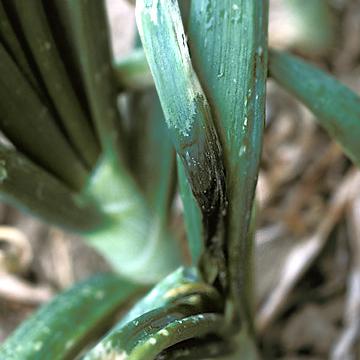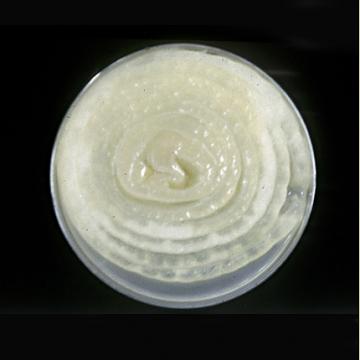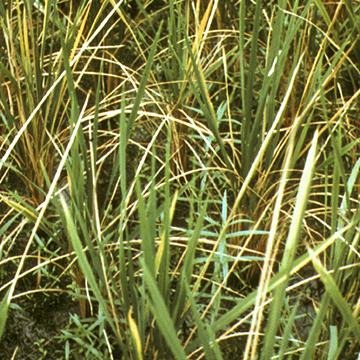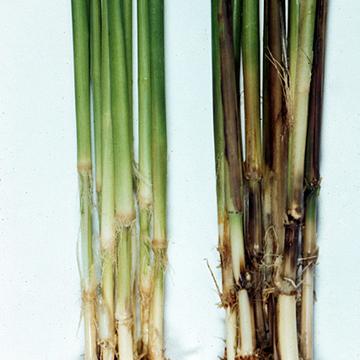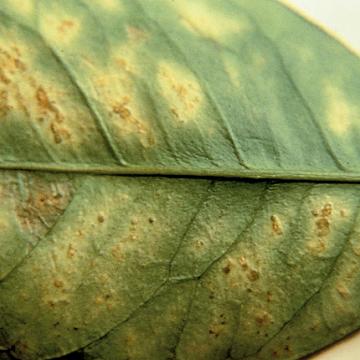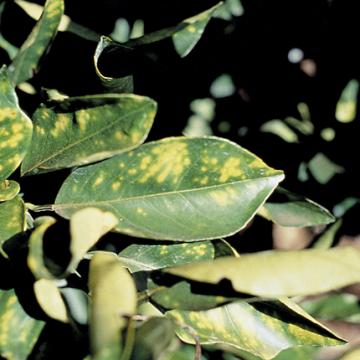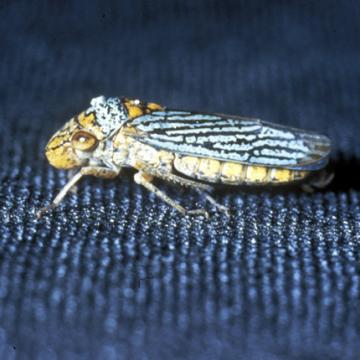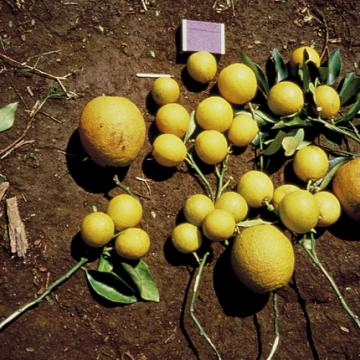DISEASE: Bacterial flower stalk and leaf necrosis
HOST: Onion
Dark, rotted areas of stalk and leaves caused by systemic invasion of the pathogen.
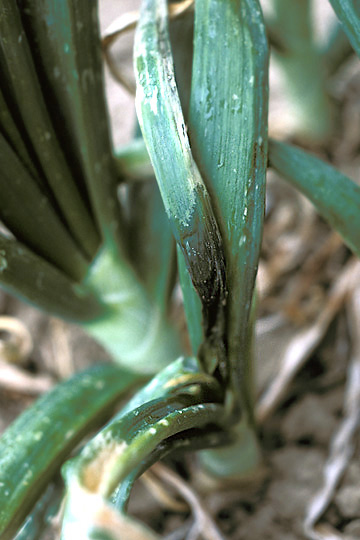
Bacterial flower stalk and leaf necrosis | Onion
DISEASE: Bacterial flower stalk and leaf necrosis
HOST: Onion (Allium cepa)
PATHOGEN: Pseudomonas marginalis pv. marginalis
SOURCE: S. Mohan
DISEASE: Bacterial flower stalk and leaf necrosis
HOST: Onion
Gray-brown rot of onion after inoculation. Disease starts as small, water-soaked lesions that later develop into slimy, gray-brown rot. The disease progresses downward from the stalk and may rot the entire bulb.
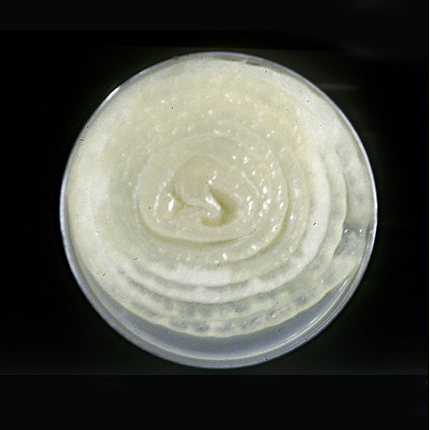
Bacterial flower stalk and leaf necrosis | Onion
DISEASE: Bacterial flower stalk and leaf necrosis
HOST: Onion (Allium cepa)
PATHOGEN: Pseudomonas marginalis pv. marginalis
SOURCE: R. Gitaitis
DISEASE: Bacterial flower stalk and leaf necrosis
HOST: Onion
Leaves with necrosis and rot. The common name for this disease is the same as those used for two other diseases. Also, another common name for this disease is bacterial soft rot.
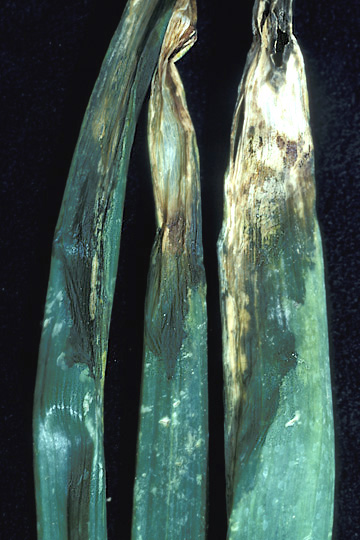
Bacterial flower stalk and leaf necrosis | Onion
DISEASE: Bacterial flower stalk and leaf necrosis
HOST: Onion (Allium cepa)
PATHOGEN: Pseudomonas marginalis pv. marginalis
SOURCE: S. Mohan
DISEASE: Bacterial foot rot
HOST: Rice
The disease causes sheaths to turn dark brown and rot; dead leaves droop. Nodes, culms, and crowns also decay, and infected tillers are easily detached from the crown. Culms and internodes turn black.

Bacterial foot rot | Rice
DISEASE: Bacterial foot rot
HOST: Rice (Oryza sativa)
PATHOGEN: Dickeya zeae
PATHOGEN SYNONYM: Erwinia chrysanthemi pv. zeae
SOURCE: M. Goto
DISEASE: Bacterial foot rot
HOST: Rice
Decayed culms (right) and healthy culms (left). Leaf sheaths of infected plants exhibit dark brown decay and attached leaves turn yellow and wilt.
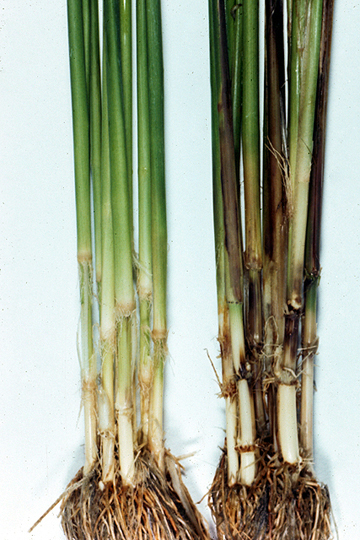
Bacterial foot rot | Rice
DISEASE: Bacterial foot rot
HOST: Rice (Oryza sativa)
PATHOGEN: Dickeya zeae
PATHOGEN SYNONYM: Erwinia chrysanthemi pv. zeae
SOURCE: M. Goto
DISEASE: Citrus variegated chlorosis
HOST: Citrus (sp. unknown)
Leaf with chlorosis in interveinal spaces and brown spots visible on lower leaf surface.
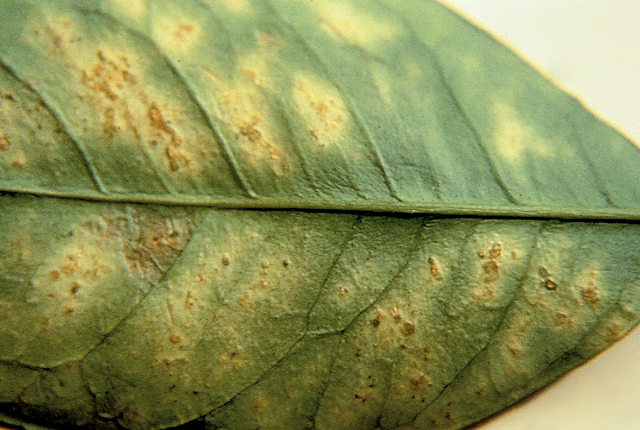
Citrus variegated chlorosis | Citrus (sp. unknown)
DISEASE: Citrus variegated chlorosis
HOST: Citrus (sp. unknown) (Citrus sp.)
PATHOGEN: Xylella fastidiosa
SOURCE: M. J. G. Beretta
DISEASE: Citrus variegated chlorosis
HOST: Citrus (sp. unknown)
Interveinal chlorosis on upper side of leaves.
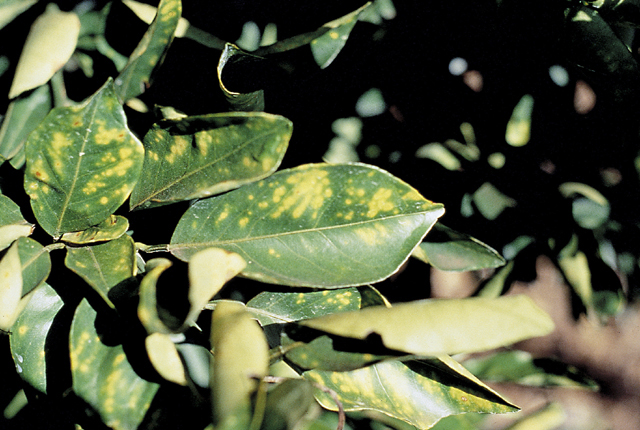
Citrus variegated chlorosis | Citrus (sp. unknown)
DISEASE: Citrus variegated chlorosis
HOST: Citrus (sp. unknown) (Citrus sp.)
PATHOGEN: Xylella fastidiosa
SOURCE: M. J. G. Beretta
DISEASE: Citrus variegated chlorosis
HOST: Citrus (sp. unknown)
Leafhopper (Oncometopia nigricans) vector of Xylella fastidiosa, which transmits citrus variegated chlorosis.
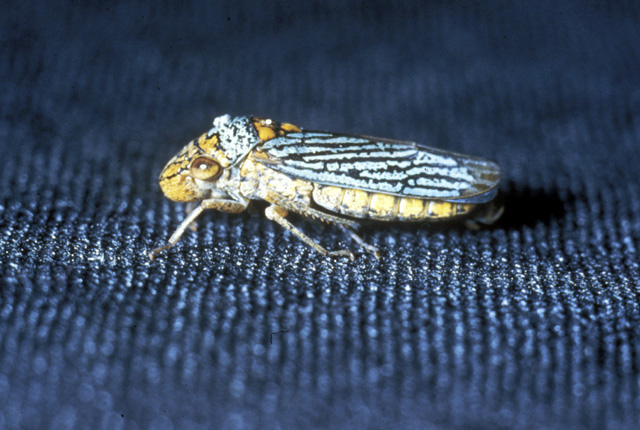
Citrus variegated chlorosis | Citrus (sp. unknown)
DISEASE: Citrus variegated chlorosis
HOST: Citrus (sp. unknown) (Citrus sp.)
PATHOGEN: Xylella fastidiosa
SOURCE: D. Hopkins
DISEASE: Citrus variegated chlorosis
HOST: Citrus (Orange)
Small, hard, diseased fruit interspersed with three normal fruits for comparison. Diseased fruit often exhibit sunburn symptoms.
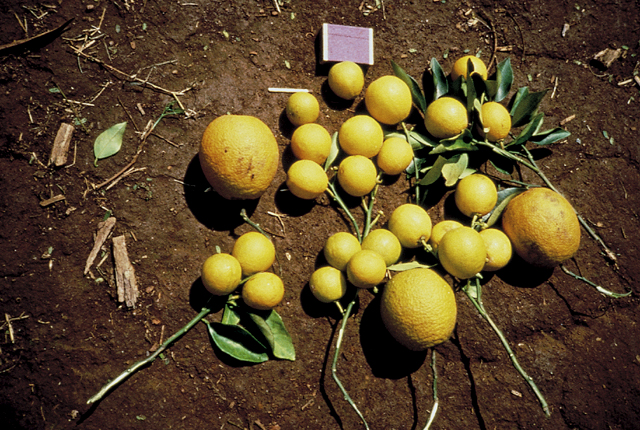
Citrus variegated chlorosis | Citrus (Orange)
DISEASE: Citrus variegated chlorosis
HOST: Citrus (Orange) (Citrus sinensis)
PATHOGEN: Xylella fastidiosa
SOURCE: M. J. G. Beretta


